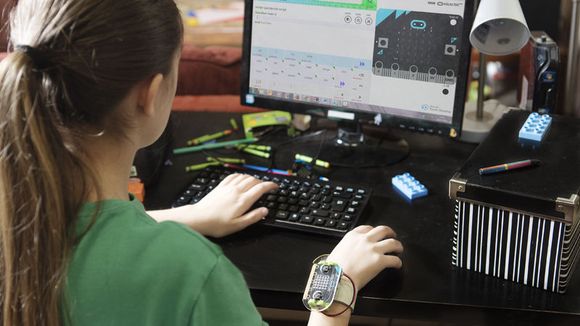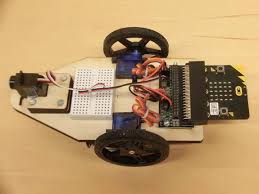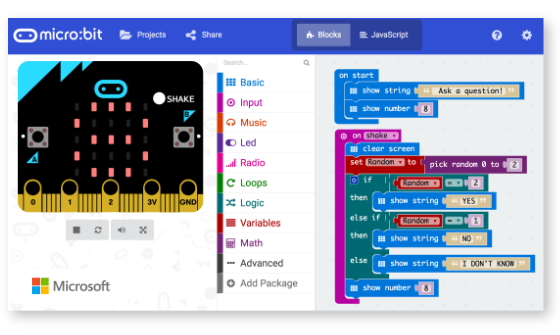Back to articles
Inspiring 100,000 More Kids Into Technology

As a first step in their technology education, 100,000 schoolchildren across Norway will soon get their hands on a Nordic Semiconductor powered micro:bit.
The need to inspire and educate the next generation to ensure there are enough people who are familiar with, and can bring about the inventions that will make the connected world work better for us all, is something we’ve written about several times before.
Nordic Semiconductor technology continues to play a critical role in achieving that aim with the recent announcement that the micro:bit – a tiny programmable computer – will be distributed free of charge to 100,000 schoolchildren across Norway.
The credit card-sized micro:bit is purposefully designed to meet a challenging set of requirements, where functionality that allows inspiring things to be achieved is balanced with simplicity of use and a low-cost point that enables access to all.
Funding expands distribution in Norway
Nordic has already donated over 3,000 micro:bits to code clubs, schools, colleges, and universities across its home market in Norway, but now major funding will see virtually all year 5 to 7 students get their hands on the device.
A four-year program worth almost 20 million Norwegian kroner ($2.3m) is to be financed by Sparebankstiftelsen DNB, a Norwegian charitable foundation, and administered by The Knowledge Center and Lær Kidsa Koding (LKK), non-profit organizations that teach children IT and coding skills, together with the country’s regional science centers. The micro:bit is also being made available to LKK’s 160 code clubs in Norway. Read the press release here.
Inspiring the next generation
The inventors and creators of the future need to have an understanding of how technology works, as opposed to just its use in the digital age. From such a broad base, they can then learn specific languages and methods as needed.
Programming languages change in popularity over time and today’s choices may be different in 10 or 20 years, but the skills and experience of fundamental problem-solving – idea generation, planning, designing, creating, testing, debugging – will still be necessary, and these skills are likely to remain important.

Just as the Nordic:Thingy was designed to accelerate the journey from product idea to proof-of-concept,, the micro:bit was designed to make it easy for schoolchildren to take their first steps into the world of possibilities that programmable devices provide.
Read more: Rapid prototyping: Develop the next great IoT app
“All of us that work with children and technology should always be looking to improve”, said Torgeir Waterhouse, Director for Internet and New Media at ICT Norway. “There are many of us who are looking forward to technology becoming more prominent in the modern curriculum and that children are now going to learn basic programming and apply those skills in other subjects. The Government's commitment to the technological school bag is important, and with the support of Sparebankstiftelsen DNB, we can now take this a big step further”.
The move follows a successful rollout in Denmark that saw DR, the Danish Broadcasting Corporation, distribute 68,000 micro:bits to schools with support from the Danish Industry Foundation and CFU Denmark.
“Our mission is to broaden participation in ICT among young people, principally between the ages of 8 and 13. Because we’re a non-profit, we can keep our costs down to enable schools and education authorities to buy in bulk”, said micro:bit CEO Gareth Stockdale in an interview with Nordic Semiconductor last year.
“But this is about more than hardware. We also design resources and programmes that aim to expand the participation. A broader base of such resources help us to engage more girls and other under-represented groups.”
What’s inside?
The micro:bit is 4cm x 5cm printed circuit board with a Nordic Semiconductor nRF51822 Bluetooth Low Energy SoC at its heart.
The Nordic SoC runs the code written by the children and handles communications with smartphones, tablets, computers and other micro:bits. The extensive set of interface and I/O ports are located on an edge strip, helping the micro:bit to engage with all kinds of gadgets including robot kits and other sensors. Other on-board devices include a USB controller, a compass and an accelerometer.
Development options to suit all abilities
Micro:bit has proved itself to be very adaptable across a broad range of users and developers. At the most introductory level there are graphical programming options such as Microsoft’s Make Code platform, a simple to use micro:bit-compatible platform that also supports JavaScript programming for more advanced users.

There is now a significant number of engineering courses at university level that also employ micro:bit to teach embedded programming at a professional level. Here the nRF51822 at the heart of a micro:bit can be accessed directly for programming in the C language with professional-grade tools.
Currently the Department of Cybernetics at The Norwegian University for Natural Sciences and Technology (NTNU) in Trondheim, Norway are using micro:bit. Second-year Master’s students get a grounding in embedded systems and their development using the micro:bit in a more advanced way.


